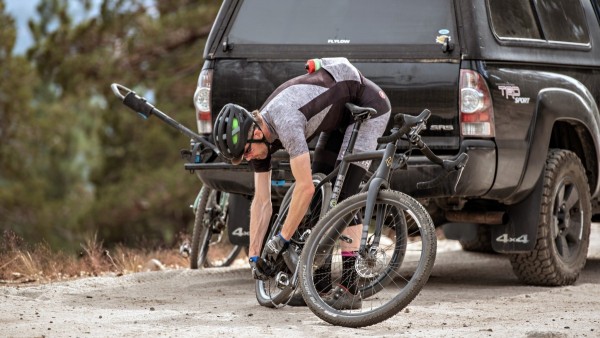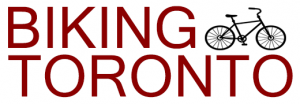“Gravel bike bridges the gap between mountain bikers and road riders”, why? Because gravel bikes, usually also referred or related to as adventure bikes, are fundamentally road bikes created to tackle a variety of surfaces, carry additional gear and are suitable for all-day riding on roads less travelled. They are made to be more durable and robust than a standard road bike, along with having an increased gear range and space for far wider tyres.
What is a gravel bike?

The gravel sector is just as versatile and diverse as the entire road bike sector: slim 700C tyres, chunky 650B slicks and even 29″ mountain bike wheels, 1x or 2x drivetrains, sometimes lightweight sometimes bombproof, quick after-work fun or week-long adventures with frame bags. In the gravel segment, everything is possible and manufacturers are using expressions like adventure bikes, monster cross, all-road, road plus all throughout their product portfolios. These terms want to define the distinctive character of each bike and identify their field of applications. But apart from just sharing a dropper-bar, all gravel-bikes are built with the same idea in mind: riding fast on all types of terrain. And of course, there is a vast assortment of applications and for each a selection of comparable bikes but there are also universal guidelines that describe the gravel phenomenon in all its different facets regardless of the specific niches.
Why do you need one?
For everything! With many manufacturers including eyelets for mudguards and racks, gravel bikes are fantastic do-it-all machines for all-day – or multi-day – adventures and events.
What is it used for?

The versatility of gravel bikes makes them a great option for multiple cycling pursuits. They are suitable for all but the fastest of road riding, while the wider tyres and wider-range gearing make off-road trails, gravel and fire roads manageable. They are robust, comfortable and often can carry luggage making them ideal for light touring adventures or for those longer and faster commutes. However, the true purpose of gravel bikes sit with a new cycling discipline called gravel grinding, this effectively sees road-type riding taken away from traffic and off the sealed road.
How to choose a gravel bike?
Like any other type of bike, there’s a lot to consider when thinking about what gravel bike to buy. They come in all shapes and sizes, frame materials, wheel sizes, and builds to suit varying needs and budgets. It is important to consider where and how you ultimately plan to ride your gravel bike, as well as how much you’re willing and able to spend.
Wheel Size

Many frames are designed to work with either wheel size, and some manufacturers give you the option to choose the size you prefer when purchasing a complete bike. It comes down to personal preference, 700c wheels typically provide greater rolling speed, while those interested in a more comfortable ride or a more mountain bike-like performance may enjoy the benefits of 650b wheels and larger tires.
Carbon vs. Aluminum
Both materials work very well for creating bike frames, but they do have some distinct differences. Aluminum is a relatively lightweight material that is inexpensive to produce and fabricate. Aluminum frames had been known for being stiff and harsh, although modern production methods have helped to create more compliant and comfortable ride qualities. Carbon fiber is significantly more expensive, as is the cost of the molds with a more involved production process making carbon frames and components more costly to the consumer. Not only is it lightweight and stiff, but carbon fiber can be manipulated in the production process with varying layups to produce distinctly different ride qualities, but you will pay a premium price for the “fancier” material.
Frame Size

Most manufacturers offer their frames in multiple sizes, usually at least five, to suit a large range of heights. If you are unsure of the size you need, manufacturer’s websites typically have a sizing guide chart to assist you.
Frame Material

Many of the larger bike brands produce their frames in both materials to offer their bikes at different price points to suit a wider range of tastes and budgets. Some smaller manufacturers produce frames in steel and titanium as well, though those materials are typically a bit more niche.
Tires
Unlike a road bike where you want a smooth and narrow tire to reduce rolling resistance on paved surfaces, gravel riders usually opt for tires with more girth and air volume, as well as some tread that adds traction on variable surfaces. The gravel bike tire market has grown as quickly as the market has expanded, and there are many tires available in a huge range of sizes and tread patterns to suit varying conditions, terrain, and preferences. Riders who frequent smoother gravel road surfaces may be happy with a faster rolling low-profile tread while those who ride rougher roads or singletrack may opt for more aggressive tread patterns for more cornering or climbing traction.
Drivetrain
Riders who ride their gravel bike on the road regularly or those who live in areas with flatter terrain may enjoy having more top end gears for laying down the power. Crankarm length is another consideration as riders of different heights have varying needs, and gravel bikes have relatively low bottom brackets. Some manufacturers offer their bikes with different length crankarms depending on frame size, with smaller frames getting shorter lengths and larger frames with longer lengths for riders with longer legs. Many manufacturers spec road bike components on their gravel models while others are putting mountain bike or gravel specifics parts on theirs. Like anything in the cycling world, there are lots of options.
Build
Most manufacturers make their gravel bike models in several build kits at varying price points. An example of this is Santa Cruz Bicycles who offers their Stigmata in a carbon frame only in five build options ranging from $3,599 up to $9,899. How much you’re willing to spend is ultimately up to you and your goals as a gravel cyclist. The differences in componentry may not matter to many riders but may be very important to those with competitive aspirations. Many frames can also be purchased as a frame and fork only, allowing the rider to choose the components themself to create their dream build.
Brakes

The majority of gravel bikes come equipped with disc brakes, either hydraulic or mechanical. Mechanical disc brakes are actuated by a cable and are generally found on lower-end builds. Hydraulic disc brakes are usually more expensive than their mechanical counterparts as they are slightly more complicated with hydraulic fluid actuating the pistons in the brake calipers. Like any bike part, hydraulic disc brakes come in a range of performance levels and prices. Either type of disc brake usually works pretty well as they are typically less affected by moisture and mud than rim brakes. Rim brakes are still in use among some gravel riders, although they generally are only found on custom builds.
Suspension

The vast majority of gravel bikes are fully rigid, meaning that they have no suspension in either the front or rear of the frame. There are a few exceptions to this rule, with some manufacturers coming up with innovative ways to take the edge off of impact and the high-frequency vibrations associated with riding on rough surfaces. An example of this is the Future Shock design used by Specialized on their Diverge models. This unique suspension design is housed in the head tube and allows for 20mm of suspension in the handlebar. A few brands like Cannondale and Niner have gone so far as to make gravel bikes with some rear suspension, although this isn’t especially common. Other manufacturers are getting creative with compliant handlebars and seatposts designed to flex and provide a small degree of vibration dampening, though this can hardly be considered suspension. Many riders modify their gravel bikes by adding suspension forks like a Fox 32 Step-Cast, but this is generally an aftermarket purchase that isn’t offered on most complete gravel builds.
Versatility
Gravel bikes are highly versatile and typically not limited to any one style of riding. They can easily be used for commuting, road riding, bike packing, touring, and even mellower singletrack rides. How you choose to use your gravel bike is ultimately up to you, although some bikes are more oriented towards adventurous riding like bike packing or bike touring. These will often have a more conservative or upright geometry and may also come with many threaded accessory and rack mounts. Salsa and Niner are a couple of brands notorious for their wealth of mounting options. Other bikes are somewhat more race-oriented, with super stiff frames and lightweight builds that prioritize speed and efficiency over comfort.
In conclusion
We hope the information presented here helps you understand and navigate the often confusing process of making a new bike purchase decision. There are lots of gravel bikes to choose from, and the market continues to expand as this genre of cycling continues to grow in popularity. The most important thing is to understand your goals as a gravel rider and to get a bike that best meets your needs and budget, then get out and ride.
Get kitted up, then go have some great adventures!
